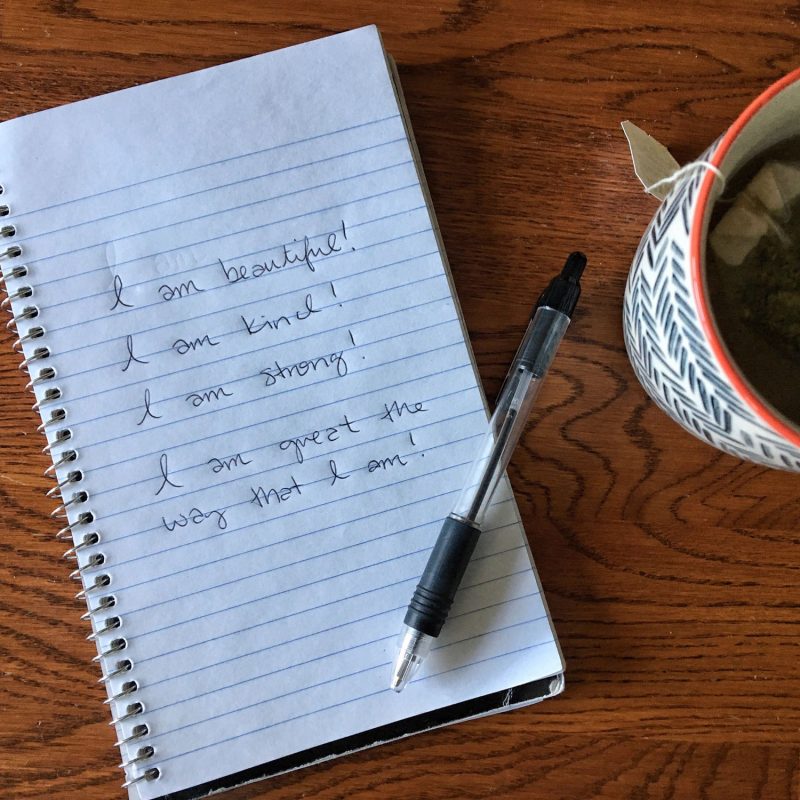
One challenge you can expect to face in your career as a personal trainer will be the disparity between clients who feel very confident in their own skin and clients who face a lot of body dissatisfaction. When these clients approach you with body image issues, or when you notice them yourselves, you may feel like it’s not your responsibility to address it, or that you are not equipped to talk to someone about their body image.
That couldn’t be more false. As a health professional, you can be a source of strength to your clients who need to hear truth about the unattainable appearance they may be pursuing. There are a few ways that you can educate, motivate, inspire, empower, and encourage your clients toward a healthy body image. Psychology is one of the best places to start.
Cognitive Dissonance and Body Image
Psychologist Leon Festinger’s Cognitive Dissonance Theory is one that is becoming well-known in the health and wellness industry. With cognitive dissonance, we can see a tendency for individuals to seek consistency among their cognitions. When there is an inconsistency or dissonance between attitudes and behaviors, changes need to be made to eliminate the dissonance. When there is a dissonance, or lack of agreement, between attitudes and behaviors it is more likely that attitudes will change to accommodate the behaviors, than the other way around.
This may sound abstract, but you can probably see plenty of examples of cognitive dissonance in your client interactions. For example, you have a client who says a statement such as, “Even though I exercise regularly, I feel so fat.” The problem here is that her attitude is that she is unhealthy, but her behavior reflects that she is engaging in healthy behaviors. There is a dissonance between the two.
Another example would be a client who says a statement such as, “I feel good about my fitness level as a distance runner, but I started lifting heavy weights because girls don’t like runners.” The issue here is that his attitude is that he enjoys running, but his behavior would suggest that running isn’t important to him.
These conflicting thoughts and behaviors can sometimes lead to disordered eating and unhealthy relationships with exercise. Can you see now why this may be a problem for body image?
Unreasonable Expectations
Most of us have an image in our minds or in front of us (via social media, film, friend groups, etc.) of the ideal appearance of a man or a woman. Some people are highly motivated to reach this appearance ideal. For women, it may be to look like a photo-shopped version of their favorite celebrity. For men, it may be to look like someone on the cover of a Calvin Klein catalog.
To some of you, this may sound like a righteous motivation to exercise and eat healthy, but the problem is that this ideal appearance is not attainable, sustainable, or even healthy. These photo-shopped, airbrushed versions of people aren’t attainable. Even if your client achieves their ideal appearance, they aren’t likely to be satisfied and stop there. There will always be more improvements to be made and flaws to fix, and that is not the life of someone who has a healthy body image.
So what can you do to help your clients develop a healthy body image?
1. Ask Questions that Reveal Dissonance
Helping your clients to see the inconsistencies in their thoughts and behaviors will help them to realize why they may be struggling with body dissatisfaction. You can start by asking questions like:
-What do you think the ideal man/woman looks like?
-Where did this appearance ideal come from?
-What will it cost you to pursue this ideal?
These kinds of questions will help them to realize that the ideal is man-made, unattainable, and costly.
2. Help to Develop a New Set of Attitudes and Behaviors
♥Help them explore ways to resist pressures to conform to an appearance ideal. For example, suggest that they:
-Stop looking at fashion magazines
-Spend less time on social media scrolling social media for fitfluencers to follow or obsessing over friends with “great bodies”
♥Discuss how to challenge personal body-related concerns. For example, suggest that they:
-Stop making negative comments about their body
-Start complimenting themselves for attributes that they love
♥Help them learn to talk more positively about their bodies and respond to future pressures to conform to an appearance ideal:
-Write kind notes to others
-Develop more positive body-talk in the workplace
-Empowering their friends to develop a better body image
3. Make Your Training Space a Safe Space
♥Be mindful of the way that you talk about your own body as a trainer. You are the example.
-If you have your own training space, place encouraging posters or notes with quotes that encourage body satisfaction and health.
-Celebrate your clients for achievements that aren’t related to their appearance.
-Redirect negative body-talk.
You may not be able to change every client into some that absolutely loves themselves and showers everyone else with compliments. You may even struggle with body image as a personal trainer, but it’s never too late to start shifting your perspective and learning to have a healthier mind and body.







